
Loading...

Loading...
Use our tools
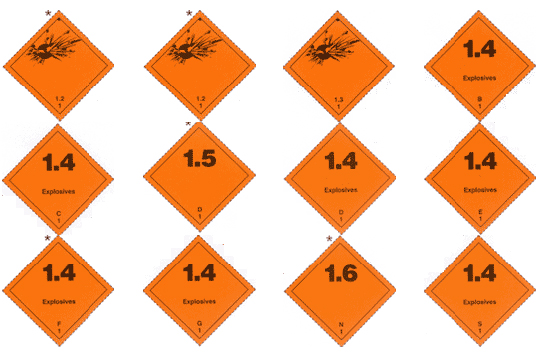
| Class 1 | Explosives |
| 1.1 | Explosives with a mass explosion hazard. |
| 1.2 | Explosives that have a projection hazard but not a mass explosion hazard. |
| 1.3 | Explosives that have a fire hazard and either a minor blast hazard o minor projection hazard or both, but not a mass explosion hazard. |
| 1.4 | Explosives that present a minor hazard. |
| 1.5 | An insensitive substance with a mass explosion hazard. |
| 1.6 | Extremely insensitive articles which do not have a mass explosive hazard. |

| Class 2 | Gases: Compressed, Liquefied or Dissolved under Pressure |
| 2.1 | Flammable Gases. |
| 2.2 | Non-flammable Gases. |
| 2.3 | Poisonous Gases. |
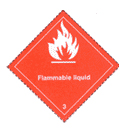
| Class 3 | Flammable liquids |
| A flammable liquid (Class 3) is a liquid that has a flash point of no more tan 60.5°C (141°F), or any other material in liquid phase with a flash point of 37.8°C (100°F) or superior, which is intentionally heated and proposed for transport of transported at its flash point or above it, in a bulk package. |

| Class 4 | Flammable substances or solids |
| 4.1 | Flammable Solids. |
| 4.2 | Substances prone to spontaneous combustion. |
| 4.3 | Substances that in contact with water emit flammable gases. |
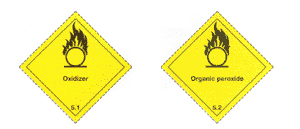
| Class 5 | Flammable substances or solids |
| 5.1 | Oxidizing substances (agents) that by oxygen production increase the risk and the intensity of fire. |
| 5.2 | Organic Peroxides– most will burn quickly and are sensitive to impact or friction. |
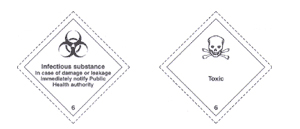
| Class 6 | Toxic and Infectious Substances |
| 6.1 | Toxic Substances. |
| 6.2 | Infectious Substances. |

| Class 7 | Radioactive Substances |
| Any amount of packages with radioactive content having label III-YELLOW (LSA-III). Some radioactive materials in “exclusive use” with radioactive materials Of low specific activity will not have the label, but the RADIOACTIVE sign is required. |
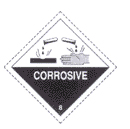
| Class 8 | Corrosive Materials |
| For the purposes of this section of the chapter “corrosive materials” (Class 8) means a liquid or a solid that causes the total destruction of the thickness of the human skin at the contact spot within a period of time. A liquid that has a high corrosion rate in steel or aluminum is also a corrosive material. |
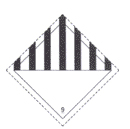
| Class 9 | Various articles and hazardous substances (Marine pollutants that are not of a hazardous nature otherwise listed in Class 9). |
| A material that presents a risk during transport but does not match the definition of any other risk class. This class includes: 1. Any material that has an anesthetic, noxious or similar property that could cause extreme annoyance or discomfort to a flight crew member to prevent the correct performance of the functions. 2. Any material for a high temperature material, a hazardous substance, a hazardous waste or a marine pollutant. |